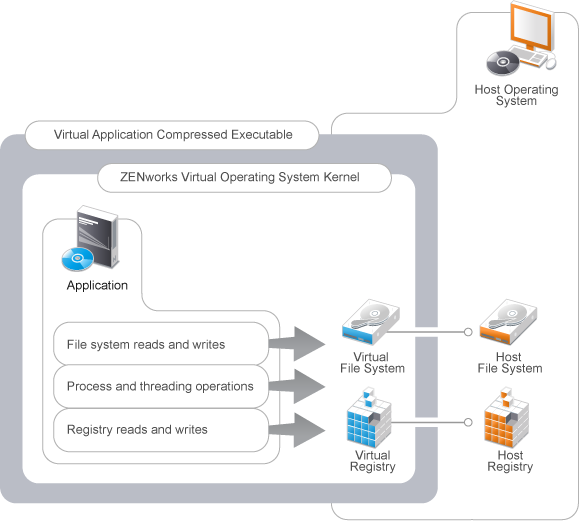1.1 ZENworks Application Virtualization Architecture
A virtual application is an application executable that contains a virtual runtime environment. It includes all files, registry data, settings, components, runtimes, and other dependencies required for the application to execute immediately. Virtual applications allow application publishers and IT administrators to significantly reduce the costs and complexity associated with development, setup, configuration, deployment, and maintenance of software applications.
ZENworks Application Virtualization uses a sandbox to contain all of a virtual application's data and settings, which are determined by the virtual application's isolation configuration settings. Applications registered to the same sandbox can view and modify each other's virtualized data and settings. Applications in a sandbox work through a virtual machine environment, which enables them to interact with local machine resources, such as, printers and shares.
All applications are registered into a single default sandbox, named Default. You can group related applications into a sandbox that is treated as a single management unit. When a sandbox is reset, all application content and data stored in that sandbox is purged and it reverts to the default state.
